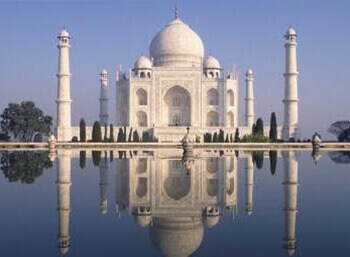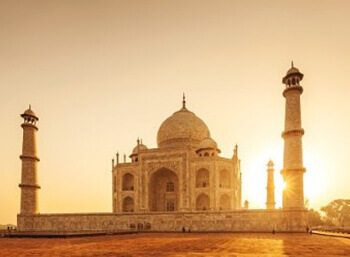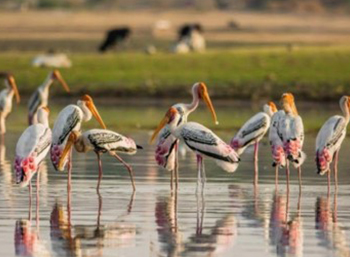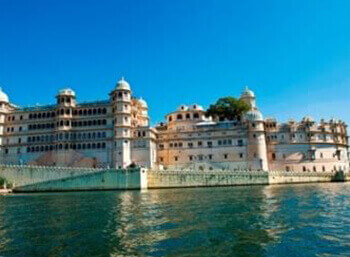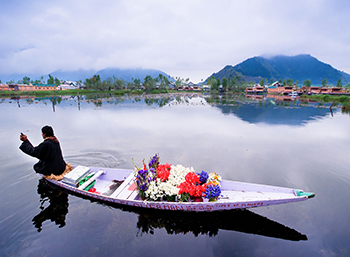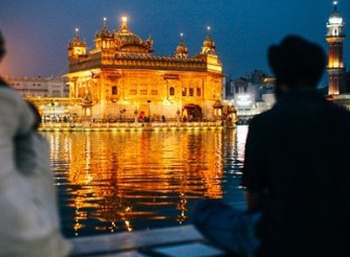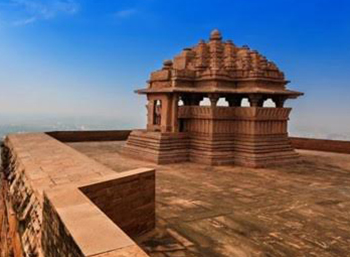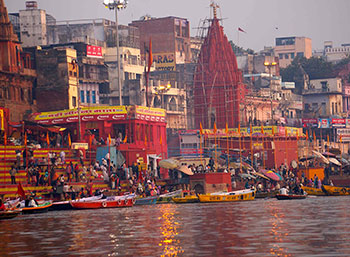Red Fort
Tourism in Delhi
Red Fort
A historian's paradise, Delhi is home to a phase of history that speaks out from every nook and corner of the ancient city. The memories of the glorious age of the Mughal rulers is still alive in the city, with most of their architectural glories still standing as mute witnesses of the era gone by.
One of these is the Red Fort or the Laal Quila. Characterizing both, the magnificent past of India as well as the future of her sovereignty, the Red Fort is one of the most symbolic features of the Indian capital. Built by the Mughal emperor Shah Jahan around 1638 and 1648, the Red Fort today is a busy market-place called the Meena Bazaar, selling a host of wares.
History states, that the Red Fort was built when Shahjahanabad replaced Agra as the capital of the Mughal rule. Located in the eastern end of Shahjahanabad, the Red Fort is symbolic of not just the pomp and splendor of the Mughals but also their architectural prowess. The Lahori Gate which is the main gate of the fort is in itself a structure that attracts thousands of visitors. The Red Fort is also the site of India's national functions on the 15th of August, India's Independence Day.
The fort is also famous from a historic perspective as it gives us an idea of the system of governance. There were separately assigned halls and spaces for the public and the nobility. This is evident from the presence of the two halls, the Diwan-i-aam and the Diwan-i-khaas which were the assemblies meant for the commoners and the aristocracy respectively. Jeweled and marbled at their time of origin, the Red Fort has, however, fallen, in later times prey to the vandalism that has been carried out by the invaders of the country. The famous Peacock Throne, that served as a source of pride in the days of the Mughal supremacy was removed to Iran by Nadir Shah in 1739 after a successful loot in the Indian capital. Known for her prestige and beauty, the Diwan-i-Khas has been the subject of Urdu poetry as well. The poet Amir Khusro once remarked, "If there is Paradise on the face of earth, it is here, it is here, it is here.
The Rang Mahal or the palace of colors is another of the remarkable attractions of the Red Fort, noted for its beautifully Lotus-shaped fountain.
Though the Red Fort is but a faint image of its former glory today, it still manages to hold its visitors spell-bound with images of its regal charm. Light and sound shows are arranged at the fort that is sure to transport you to the medieval era of the Mughals. Tickets for the show which are organized in Hindi as well as in English can be bought from the Fort.
History
One of the strongest remainders of the glorious Mughal influence on India, the Red Fort in Delhi is today not just one of the important tourist attractions of India but also a significant symbol of her democracy. The Fort, which was built by the architectural monarch Shah Jahan in 1648, was started in 1639, after which Shah Jahan changed the Mughal capital from Agra to Delhi. The history of the Red Fort, is in itself an attraction of Delhi, giving birth to an excellent light and sound show that is housed inside the fort each evening. The inauguration of the Fort was in itself an occasion to remember with the main halls of the Fort being draped in rich fabrics brought in from fellow trading countries like China and Turkey. Designed by the renowned Mughal architects, Ustad Hamid and Ahmad, the Fort, brings to alive even today, the life of the people of the era.
Even today a visit to the Red Fort can conjure up images of the lives within the red sandstone walls during the golden age of the Mughals. The main point of entry, the Lahore Gate would take the visitor to the Chatta Chowk where the royalty shopped for exquisite jewelry, luxurious fabrics and other delicate artistry, where the sounds of the royal band echoes even to this day. The Meena Bazaar, one of the oldest bazaars in existence in the world today, provides the visitors to the fort with a glimpse of the life of the commoners of the period. The elegance and regality of the Red Fort also made it one of the most coveted aspects of a conquest of India in the eyes of foreigners like Nadir Shah, who conquered the fort in 1739, depriving the Fort of a number of its treasures, including the pride of the Mughal Empire, the Peacock Throne.
Location
TIME TO VISIT / ENTRANCE FEE
Closed ON : Monday
Entery fee : Rs. 10 (Indians), Rs. 250 (foreigners)
Opening Time : 09:30 AM Closing Time : 04:30 PM
Closed on public holidays : No
How to Reach
Nearest Airport
Indira Gandhi International AirportNearest Metro Station
Old Delhi Railway StationNearest metro station
Kashmir GateStructures in Red Fort
Resplendent in her grandeur that remains one of her most important characteristics even today, the Red Fort is one of the most important symbols of not just India’s history but also one of her greatest prides, her democracy. The Fort, built in red sandstone and one of the most prominent architectural masterpieces of the Mughal era, is also the venue to the annual flag hoisting ceremony when the Prime Minister of India unfurls the Indian tricolor on India’s Independence Day on 15th August each year. Home to some of the most magnificent architectural examples of mediaeval India, the structures in the Red Fort are a must-see while on a trip to Delhi.
Structures
The Red Fort is a medieval complex comprising of a number of palaces, offices, workshops, halls, mosques as well as market places. Built around an area of 120 acres, this UNESCO certified world heritage site consists of Mughal and non Mughal architectural structures. These include:
The Diwan-i-Khas or the Hall of Private Audience
Perhaps the pride of the Red Fort, the Diwan-i-Khas is today just a pale reminder of its glorious past. Decorated with precious and semi-precious stones, this was the court of the Mughal Emperor where he sat in conference with the ministers of his council. Once home to he heavily ornamented Peacock Throne, the Diwan-i-Khas is also characterized by an inscription in Persian which reads “If there is a paradise on the face of the earth, it is this, it is this, it is this”, composed by the famous Persian poet, Amir Khusroe.
The Diwan-i-Amn or the Hall of Public Audience
The court in which the emperor addressed the pleas of his citizens, this is a rectangular hall with three aisles and nine multiple arches, which housed the royal throne beneath a marble canopy decorated with precious stones and floral motifs.
The Rang Mahal (Palace of Colors) or the Imtiaz Mahal
Consisting of six apartments divided by arched pillars constructed in a typically Mughal style of architecture, this beautiful palace is built over a basement that in turn is built around a main hall with rooms at each end.
- The Moti Masjid or the Pearl Mosque
- The Hayat-Baksh Bagh or the Life-giving Garden
- Zafar Mahal
- The Hamam or the Bath
Built by
Built by the emperor of architecture, Shahjahan the fort was completed in 1648.Nature & Architectural style
A Fort city, the Red Fort showcases a mixture of Mughal and non-Mughal styles of architecture.

